I was at a party when Felipe Recalde from Compound Genetics came up and pulled out a vial filled with these clear, gelatinous bubbles. Inside each orb was a tiny green shoot suspended in goo like an embryo in a fish egg. He shook them up and poured some into my hands to show they weren’t as delicate as they appeared. “These,” he said, “are Cannabis seeds.”
When you think of planting fields of Cannabis 100 years from now, what do you imagine it will look like? Certainly far different than the hoop houses or even the giant indoor facilities we see today. Looking at the progression from small farms to large facilities and seeing the title of this article, it’s hard not to start picturing some kind of science fiction garden from “Blade Runner” or “Alien.” Certainly the term “synthseeds” sounds like it was made by the Weyland-Yutani Corporation. The concept of a synthetic seed, or seed analog, was actually first discovered back in 1958.
A Seed By Any Other Name
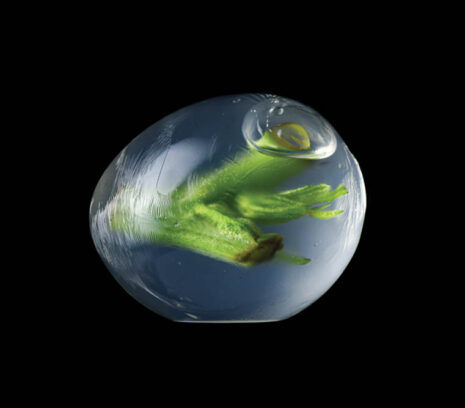
Presented as a concept in 1977, the very first synthseeds were reproduced in 1984 with somatic embryos from alfalfa. Even looking the concept up online you’ll find YouTube videos dating back to five and six years ago from places as far away as Australia. The National Library of Medicine lists a 2022 study examining artificial seeds as an alternative approach for the commercial-scale use of clones. Because, to be clear right from the start, we’re not talking about a solution for traditional Cannabis cultivation methods but rather another tool in the playbook for large-scale cultivation.
There will always be a need for natural seed stock in the world of Cannabis and the genetic diversity it provides. However, as more commercial facilities open up, synthetic seeds have undeniable applications in those environments — particularly for transferring genetics. Many different laws and regulations still apply to seeds. Remember that while a package might say “novelty use,” it’s still subject to agricultural restrictions. Many tourists have come back from Amsterdam only to discover their “novelty” seeds taken at customs. In speaking with Compound for this article, Recalde says the meristem cell contained inside an artificial seed represents base cells and can’t simply be planted in the ground to grow. Therefore, they’re excluded from many of the situations traditional seeds can find themselves in.
To learn more, we headed to Compound Genetics’ facility in Santa Rosa, where they maintain a lab as well as a facility to work on long-term projects like synthseeds. Part of Node Labs and connected to an antique barn, the facility can house a staggering 450 different cultivars, but Production Manager Emily Hsu says they normally store around 300 strains. These range from Compound and other recreational flower brands to a section for private client storage and a space for their work with the Origins Council to offer free genetic banking for farmers stewarding California’s legacy outdoor genetics. Together with Lauren Avenius, CEO of Node Labs, Hsu walked us through the breakdown of the parts of a synthetic seed and how they’re made, a process they say all starts with meristems cells.
What Are Meristeems?
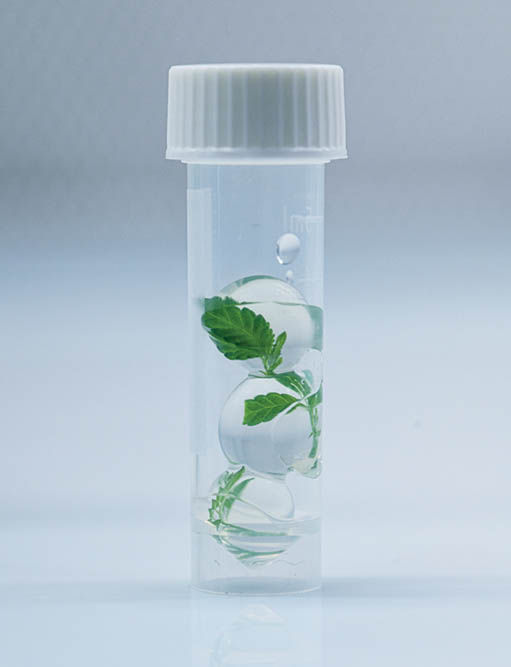
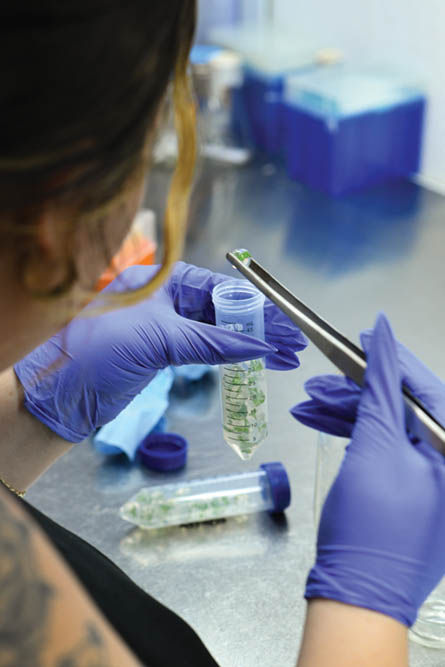
A meristem is a cluster of cells within a plant containing a bunch of actively dividing initial cells, along with derivative cells that have an intended purpose. Avenius says, “Think of it a bit like the stem cell of the plant world.” They collect these meristems and then prepare them into synthetic seeds which they refer to in the lab as “boba.” When asked why the reference, Avenius said, “I think we’ve all had boba tea before, and you understand how it has that outer casing within that little bit of a pop when it opens up and then it’s filled with a sugary sort of fluid, right? That’s basically what this is. We simulate everything that’s inside a seed: all of the food, the little bit of hormones, all of the sugars and starches that that seed embryo gets, we put in here.” Softer than your traditional seed, the shell is made of sodium alginate, a completely organic, edible substance that the plant can easily break through but requires a bit of force to burst from the outside.
Also, Avenius points out, unlike seeds you can’t just plant a meristem and have it grow into a plant for harvest. “Those meristems need that direction, the right growth medium and hormones to get it to grow into what you want. Sometimes that can make the plants have a strange morphology,” she says. That’s the reason they don’t recommend using tissue culture as a flowering crop but instead recommend growing it out to become a mother plant.
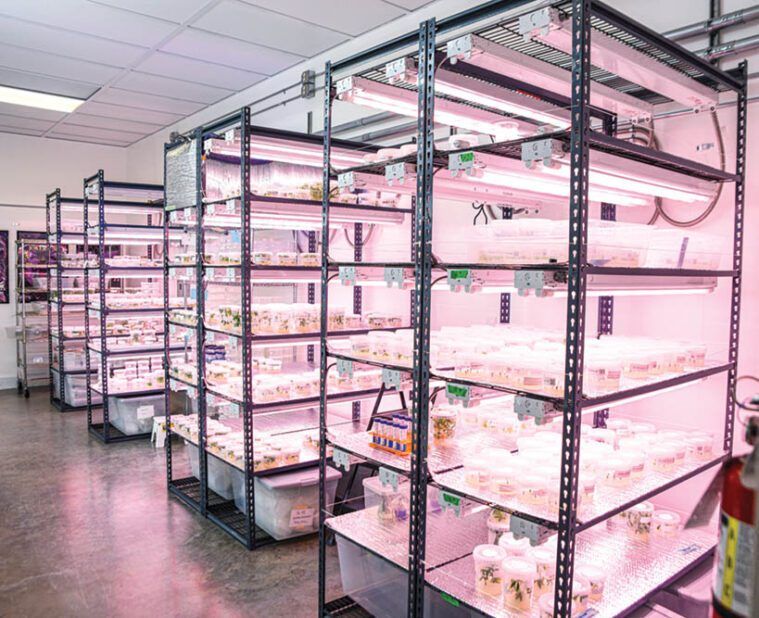
For now, they want boba seeds to become a replacement for the traditional storage methods in tissue culture, and eventually replacing clones is Avenius and Recalde’s long-term goal. “Our vision for the project is that these become a viable product to replace clones so that you’ll get all the benefits of a sterile clone and genetically identical plants, with all the agronomic data, so you can dial in your room and be able to have that perfect product output,” Avenius says.
From there, we went to the lab station where Shannon Healy, manager of R&D, was sitting down to create the artificial seeds by collecting the fluid and meristem into a scientific turkey baster, dropping it into the sodium alginate, where it instantly formed a tiny egg and was scooped out into a sterile container. We asked Healy if the recipe for the liquid starter was universal to the process, and she says they actually went through several different mixtures of sodium alginate and calcium chloride before achieving a successful autoclavable solution. When asked how long these stay viable, Healy said they have some in cold storage that are as old as five months. Even the ones I was sent home with sat in and out of my fridge for six weeks before tiny sprouts started to poke through the shells.
The Future is Now
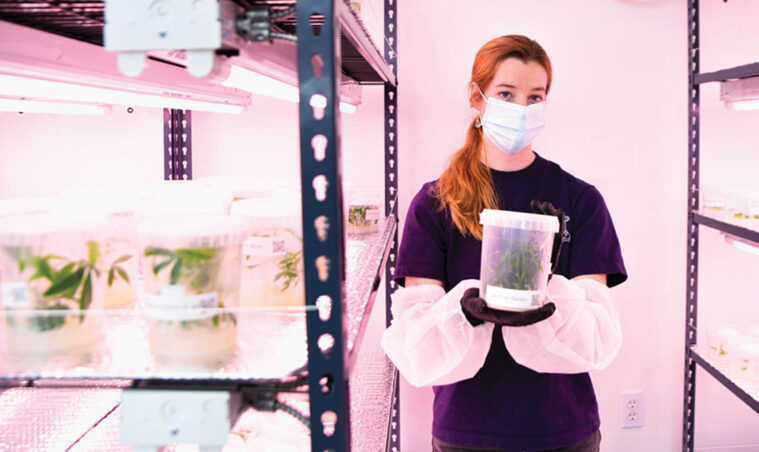
Currently, Recalde says Node and Compound are stress testing to see how long the meristem stays viable, as well as running trials on how to eventually plant these straight into rockwool cubes. He believes that with a tissue culture lab in Colombia and partners in Germany, Canada, Israel, Thailand and Australia, “we need to simulate that supply chain now to be ready.” Long term, Avenius says, they want home and commercial growers to be able to plant these just like seeds. The result would be a healthy, harvestable plant grown straight from nothing but the tiny bit of tissue and its boba bathtub. Recalde says he sees one of the most important long-term benefits as the ease with which synthetic seeds allow us to transport plants.
This leads me back to what put me into this story in the first place: the idea that you can wander around with a container full of healthy clones right in your pocket, ready to be delivered anywhere you can reach in at least six weeks. To anyone who can recognize how important genetics are to the future of Cannabis, this represents a possible game-changer. Despite the 40-year-old technology still being 10 to 15 years away from what Node and Compound are picturing, this is something they see as part of prepping for the future.
This year at Spannabis in Barcelona, Avenius says they hope to unveil the project to commercial growers with a simplified explanation: “How do we combine the best thing about seeds, which is they’re cheaper and healthier, with the best thing about tissue culture and clones, which are genetically identical and have proven commercial viability?”
compound-genetics.com | nodelabsca.com | @compoundgeneticsofficial | @nodelabs










